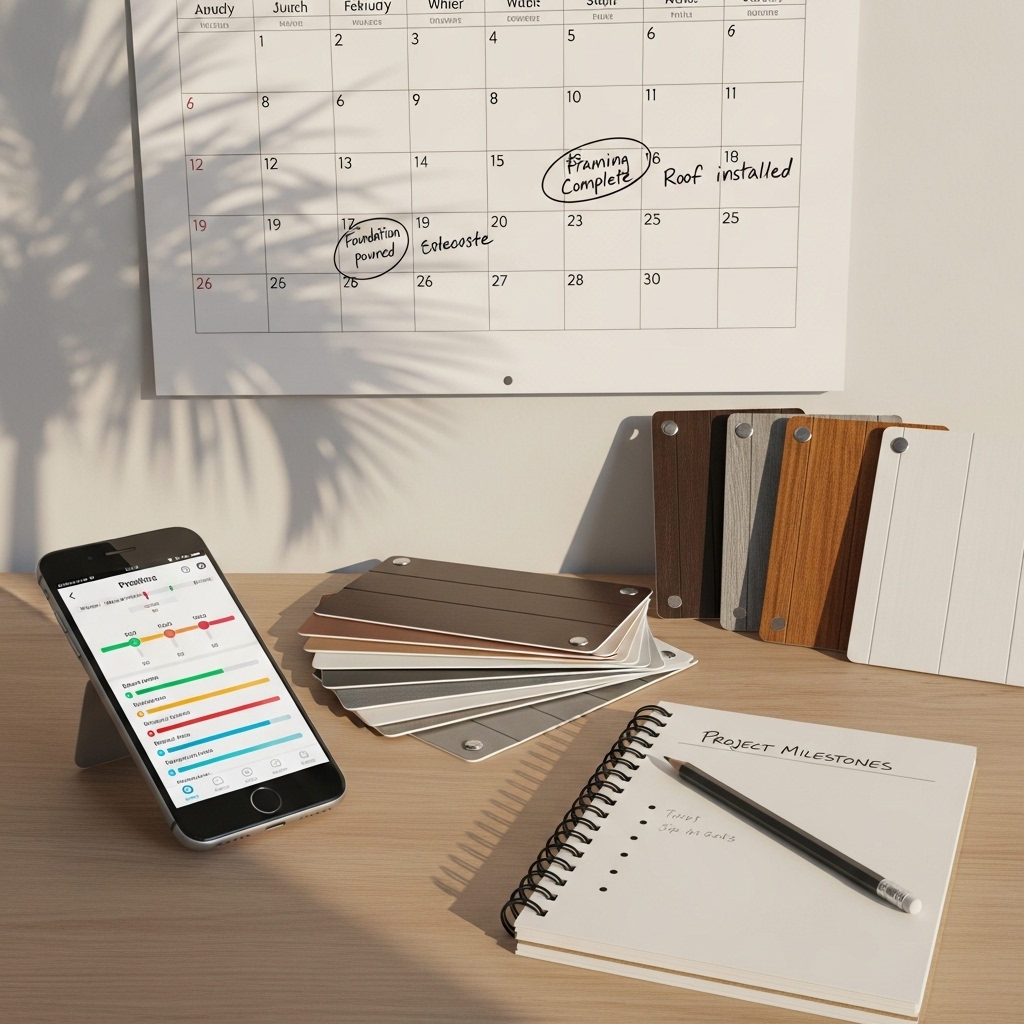Planning a garage door installation in Florida involves two big questions: how long will the project take, and what factors influence the overall investment? While specific numbers vary by home and municipality, you can still build a dependable plan by understanding the variables that shape timelines and the elements that typically affect your total outlay. This guide breaks down scheduling milestones, decision points, and practical strategies to move from selection to inspection without surprises. If you prefer a managed experience, many homeowners choose expert garage door installation support to coordinate product ordering, permitting, and inspections end to end.
What Shapes the Project Timeline
- Product lead times: Standard steel panels may arrive sooner than impact-rated glass or custom finishes. Seasonal demand and weather events can also affect availability.
- Permitting: Each municipality has its own review process. Complete, clearly labeled submissions reduce back-and-forth and speed approvals.
- Scheduling: Installer workload, inspector availability, and weather windows influence start dates and final sign-off.
- Site conditions: Framing repairs, unlevel slabs, or electrical additions (for openers) can add time.
- Configuration complexity: Double doors, high-lift tracks, or specialty hardware may extend installation time.
Typical Timeline Milestones
- Consultation and measurements: Verify headroom, side room, and backroom; assess framing and slab conditions.
- Product selection and documentation: Choose wind- or impact-rated doors and assemble product approvals and instructions.
- Permit submission and review: Provide design pressures and fastening schedules that match your address.
- Ordering and logistics: Place orders for the door, tracks, springs, hardware, and opener; confirm delivery timelines.
- Pre-install preparation: Clear the garage and ensure power and Wi-Fi access if using smart features.
- Installation day: Removal of old door, reinforcement as needed, new hardware and panels, springs, opener, and seals.
- Testing and quality check: Adjust force and travel limits; verify safety sensors; confirm balance.
- Inspection and closeout: Provide documents on-site; address any notes promptly for sign-off.
Key Factors That Influence Overall Investment
- Door construction and rating: Wind or impact ratings, steel gauge, and reinforcement affect durability and complexity.
- Size and configuration: Single vs. double doors, high-lift setups, and special tracks influence materials and labor.
- Materials and finishes: Corrosion-resistant hardware, premium coatings, and glass options add resilience and style.
- Insulation and glazing: Thermal performance and daylighting affect comfort and noise control.
- Opener features: Battery backup, quiet drive systems, and smart connectivity enhance access and convenience.
- Site readiness: Framing reinforcement, slab leveling solutions, or electrical upgrades can add steps.
- Permitting and inspection requirements: Documentation and scheduling vary by jurisdiction.
Sequencing for Efficiency
A well-planned sequence saves time: finalize selections with product approvals, submit a complete permit package, and order materials once compliance is confirmed. Coordinate delivery with the installation date and ensure inspection availability. Maintain a buffer for weather or shipping changes, particularly during storm season.
Pre-Install Prep to Reduce Delays
- Clear the work area thoroughly to speed removal and setup.
- Confirm an active outlet for the opener and tool power.
- Share Wi-Fi credentials in advance if smart setup is planned.
- Discuss slab level solutions to minimize threshold gaps and water intrusion.
- Arrange pet and child safety plans so installers can work without interruptions.
Installation Day: What to Expect
Crews begin by releasing spring tension and removing the old door, tracks, and hardware. They verify framing conditions, install anchors per product approval, and mount vertical and horizontal tracks. Panels are stacked with hinges and rollers, struts are added for stiffness, and torsion springs are sized and tensioned for balance. The opener is mounted and aligned, safety sensors are installed, and weather seals are set. The system is then tested and fine-tuned for smooth, quiet operation.
After Installation: Testing and Inspection
Expect multiple cycles to confirm balance and proper force settings. Photo eyes are tested with objects, and manual release operation is demonstrated. For jurisdictions requiring inspection, documents should be on-site: permit, product approvals, and installation instructions. Address any inspector notes promptly to avoid re-visits.
Strategies to Keep the Timeline on Track
- Submit a complete permit package with clear labeling of design pressures and fastening schedules.
- Choose readily available finishes when tight timelines matter.
- Plan installation dates with a weather buffer, especially in storm season.
- Confirm opener compatibility and accessories at ordering to avoid day-of changes.
- Photograph key fastening and bracing for your records and inspector reference.
Ongoing Maintenance Protects Your Investment
- Lubricate rollers, hinges, and bearings at regular intervals.
- Inspect seals for wear and replace to maintain weather protection.
- Check fasteners annually and after severe weather events.
- Test safety reversals monthly and keep photo eyes aligned and clean.
- Rinse coastal salt residue periodically and reapply protective coatings.
Frequently Asked Questions
Q: How long does a standard installation take once materials are on-site? A: Many single-door projects complete in a day, while complex configurations may take longer.
Q: What documents does the inspector want to see? A: The permit, product approvals for the exact model and configuration, and installation instructions.
Q: Can I speed up permitting? A: Submitting a complete, legible package and responding quickly to comments helps. Some jurisdictions offer online review.
Q: Do I need an impact-rated door? A: Requirements depend on your location, exposure, and whether you are in a wind-borne debris region or HVHZ. Your installer can advise.
Q: Will an insulated door help in Florida? A: Yes. Insulation and quality seals improve comfort, reduce noise, and help protect stored items from temperature swings.
Q: What if my slab isn’t level? A: Options include adjusting track and seal placement or adding threshold solutions to reduce gaps and water entry.
Move Forward with a Clear Plan
With a realistic timeline and an understanding of the factors that shape your project, you can confidently schedule, coordinate, and complete your Florida garage door upgrade. If you would like a well-orchestrated project that aligns product selection, paperwork, and inspection, schedule professional garage door installation and enjoy a reliable, code-ready result built for Florida’s climate.

